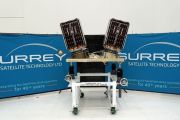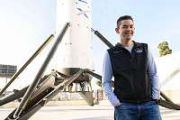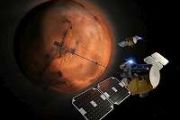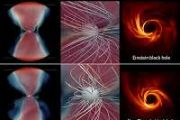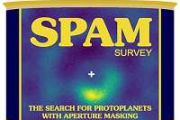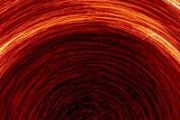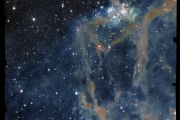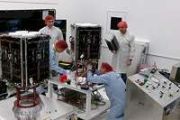
Copernical Team
Firefly Aerospace awarded multi-launch agreement with L3Harris
 Firefly Aerospace, Inc., an end-to-end space transportation company, has signed a multi-launch agreement with L3Harris Technologies [NYSE:LHX] for three dedicated launches on Firefly's Alpha vehicle in 2026. The agreement further positions Firefly as the leader in small-lift launch services as the company ramps up production of its Alpha vehicle to support the growing needs of both government an
Firefly Aerospace, Inc., an end-to-end space transportation company, has signed a multi-launch agreement with L3Harris Technologies [NYSE:LHX] for three dedicated launches on Firefly's Alpha vehicle in 2026. The agreement further positions Firefly as the leader in small-lift launch services as the company ramps up production of its Alpha vehicle to support the growing needs of both government an Terran Orbital unveils new product line of seven satellite buses
 Terran Orbital (NYSE: LLAP) has announced a new lineup of seven standard satellite bus platforms. Over a decade ago, Terran Orbital pioneered the creation of CubeSat standards, and now, we are establishing new benchmarks for satellite technology for the coming decade. These standards are built upon Terran Orbital's manufacturing capabilities, featuring components and modules that can be readily
Terran Orbital (NYSE: LLAP) has announced a new lineup of seven standard satellite bus platforms. Over a decade ago, Terran Orbital pioneered the creation of CubeSat standards, and now, we are establishing new benchmarks for satellite technology for the coming decade. These standards are built upon Terran Orbital's manufacturing capabilities, featuring components and modules that can be readily Furthest ever detection of a galaxy's magnetic field
 Using the Atacama Large Millimeter/submillimeter Array (ALMA), astronomers have detected the magnetic field of a galaxy so far away that its light has taken more than 11 billion years to reach us: we see it as it was when the Universe was just 2.5 billion years old. The result provides astronomers with vital clues about how the magnetic fields of galaxies like our own Milky Way came to be.
Using the Atacama Large Millimeter/submillimeter Array (ALMA), astronomers have detected the magnetic field of a galaxy so far away that its light has taken more than 11 billion years to reach us: we see it as it was when the Universe was just 2.5 billion years old. The result provides astronomers with vital clues about how the magnetic fields of galaxies like our own Milky Way came to be. Closing in on the elusive neutrino
 The humble neutrino, an elusive subatomic particle that passes effortlessly through normal matter, plays an outsized role among the particles that comprise our universe. To fully explain how our universe came to be, we need to know its mass. But, like so many of us, it avoids being weighed.
Now, an international team of researchers from the United States and Germany leading an ambitious qu
The humble neutrino, an elusive subatomic particle that passes effortlessly through normal matter, plays an outsized role among the particles that comprise our universe. To fully explain how our universe came to be, we need to know its mass. But, like so many of us, it avoids being weighed.
Now, an international team of researchers from the United States and Germany leading an ambitious qu Camera hack lets Solar Orbiter peer deeper into Sun's atmosphere
 Scientists have used Solar Orbiter's EUI camera in a new mode of operation to record part of the Sun's atmosphere at extreme ultraviolet wavelengths that has been almost impossible to image until now. This new mode of operation was made possible with a last-minute 'hack' to the camera and will almost certainly influence new solar instruments for future missions.
Solar Orbiter's Extreme Ult
Scientists have used Solar Orbiter's EUI camera in a new mode of operation to record part of the Sun's atmosphere at extreme ultraviolet wavelengths that has been almost impossible to image until now. This new mode of operation was made possible with a last-minute 'hack' to the camera and will almost certainly influence new solar instruments for future missions.
Solar Orbiter's Extreme Ult On the road to spotting alien life
 In early August, scientists and engineers gathered in a small auditorium at Caltech to discuss how to build the first space telescope capable of detecting life on planets like Earth. The proposed mission concept, called the Habitable Worlds Observatory (HWO), would be the next powerful astrophysics observatory after NASA's James Webb Space Telescope (JWST). It would have the ability to study sta
In early August, scientists and engineers gathered in a small auditorium at Caltech to discuss how to build the first space telescope capable of detecting life on planets like Earth. The proposed mission concept, called the Habitable Worlds Observatory (HWO), would be the next powerful astrophysics observatory after NASA's James Webb Space Telescope (JWST). It would have the ability to study sta NASA's completes Oxygen-Generating Experiment MOXIE
 Riding with the Perseverance rover, the instrument has proved to be a viable technology for astronauts on Mars to produce oxygen for fuel and breathing. When the first astronauts land on Mars, they may have the descendants of a microwave-oven-size device to thank for the air they breathe and the rocket propellant that gets them home. That device, called MOXIE (Mars Oxygen In-Situ Resource Utiliz
Riding with the Perseverance rover, the instrument has proved to be a viable technology for astronauts on Mars to produce oxygen for fuel and breathing. When the first astronauts land on Mars, they may have the descendants of a microwave-oven-size device to thank for the air they breathe and the rocket propellant that gets them home. That device, called MOXIE (Mars Oxygen In-Situ Resource Utiliz Psyche on track for liftoff next month
 Bound for a metal-rich asteroid of the same name, the Psyche mission is targeting Oct. 5 to launch from NASA's Kennedy Space Center in Florida.
The spacecraft's solar arrays are folded like an envelope into their stowed position. Xenon gas - fuel for the journey to the asteroid belt - is loaded. All four thrusters have passed their final tests. Engineers have confirmed the massive high-gai
Bound for a metal-rich asteroid of the same name, the Psyche mission is targeting Oct. 5 to launch from NASA's Kennedy Space Center in Florida.
The spacecraft's solar arrays are folded like an envelope into their stowed position. Xenon gas - fuel for the journey to the asteroid belt - is loaded. All four thrusters have passed their final tests. Engineers have confirmed the massive high-gai Week in images: 04-08 September 2023

Week in images: 04-08 September 2023
Discover our week through the lens
Thumbs up for training
 Image:
ESA project astronaut Sławosz Uznański from Poland inside the Columbus mockup at EAC.
Image:
ESA project astronaut Sławosz Uznański from Poland inside the Columbus mockup at EAC. 

